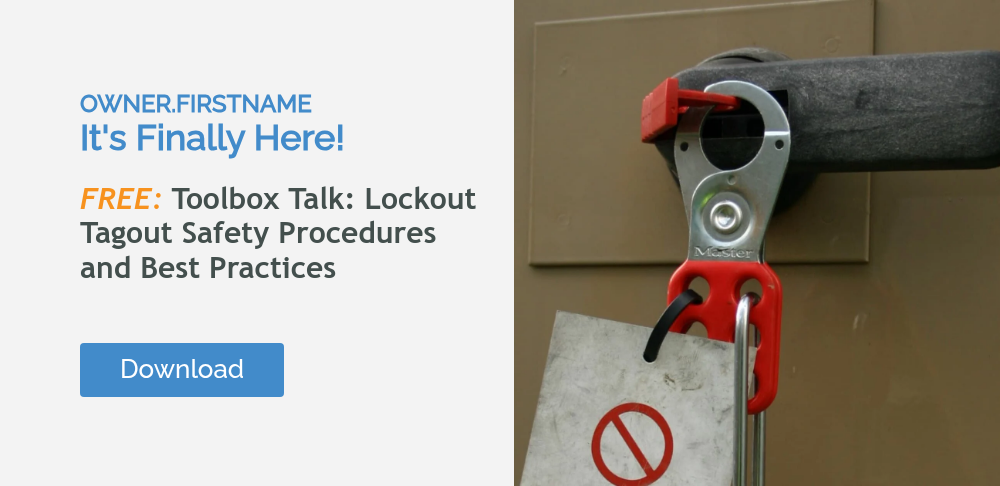Lockout/Tagout (LOTO) procedures are essential for keeping workers safe during equipment maintenance and repair. But staying compliant and safe isn’t just about knowing the rules—it’s about putting them into practice. Here are 50 real-world LOTO tips your crew can use every day. For more insights, explore our Lockout Tagout Training.
Getting Started: Prep and Planning
-
Know your equipment – Understand the specific energy sources involved.
-
Review procedures before every job – Don’t rely on memory—check the official LOTO plan.
-
Identify all energy sources – Don’t forget hidden or secondary energy (e.g., stored pressure, springs).
-
Have the right lockout devices ready – Keep kits stocked and accessible.
-
Use one lock per worker – Everyone involved in the task should use their own lock.
-
Use durable, standardized tags – Tags must resist weather, chemicals, and rough handling.
-
Label locks with your name – Clear identification prevents confusion and unauthorized removal.
-
Communicate the shutdown plan – Make sure everyone involved knows what's being locked out.
-
Assign a LOTO coordinator – Have someone lead and double-check the process.
-
Document each step – Paper or digital checklists help prevent missed steps.
During Lockout
-
Shut equipment down properly – Follow the manufacturer’s recommended steps.
-
Isolate energy sources completely – Don’t just switch it off—cut power at the source.
-
Bleed stored energy – Release trapped pressure, drain tanks, or discharge capacitors.
-
Apply all relevant locks and tags – Electrical, mechanical, hydraulic, pneumatic—cover them all.
-
Verify isolation before work begins – Use test equipment or try the start switch to confirm.
-
Control access to keys – Keep keys in a designated, locked location.
-
Double-check for secondary power sources – These often go unnoticed.
-
Communicate with all affected employees – Make sure everyone in the area knows equipment is locked out.
-
Use group lockout boxes when needed – Especially helpful for multi-person jobs.
-
Stay organized – Keep tags, tools, and equipment neat to avoid mistakes.
While Performing Maintenance
-
Stay alert to changes in the work area – New hazards can appear during maintenance.
-
Never bypass a lockout – Even “just for a second” is too risky.
-
Don’t trust warning labels alone – Lockout devices must be physically secure.
-
Use proper PPE while working – LOTO doesn’t replace the need for gloves, eyewear, etc.
-
Maintain a clean work area – Clutter increases the risk of error or missed steps.
-
Track all changes to procedures – Update LOTO documentation after any changes.
-
Monitor team compliance – Spot checks help reinforce a safety culture.
-
Watch out for outside contractors – Make sure they follow your LOTO procedures too.
-
Pause and reassess if something seems off – Trust your gut and check everything again.
-
Don’t rush – Mistakes happen when people are trying to beat the clock.
After the Work is Done
-
Remove tools and debris before re-energizing – Clean the area thoroughly first.
-
Double-check that everyone is clear – Announce your intent to re-energize.
-
Remove only your own lock – Never remove someone else’s tag or lock.
-
Verify systems are safe to restart – Inspect the area for any potential hazards.
-
Restart equipment according to manufacturer guidelines – Avoid shortcutting the process.
-
Communicate completion to affected employees – Let everyone know the equipment is live again.
-
Log the task and lockout steps – Maintain a record for compliance and training.
-
Hold a quick debrief if issues came up – Learn and improve the process for next time.
-
Inspect lockout equipment – Damaged tags, locks, or devices should be replaced.
-
Reset lockout kits – Restock and prep for the next use immediately.
Training and Continuous Improvement
-
Train regularly, not just once – Refreshers help keep skills sharp.
-
Include real-world scenarios in training – Make it relevant to your workplace.
-
Test knowledge with drills – Simulated lockouts build confidence and accuracy.
-
Use visual aids and signage – Posters and labels reinforce procedures.
-
Keep LOTO procedures accessible – Post them near equipment or in digital form.
-
Encourage reporting of close calls – Use them as learning opportunities.
-
Reward good LOTO practices – Positive reinforcement works.
-
Involve workers in updating procedures – Their input helps make policies stronger.
-
Stay up to date with OSHA regulations – Requirements can change over time.
-
Make safety part of the culture – LOTO isn’t just a checklist—it’s a mindset.
Final Thoughts
Lockout/Tagout isn’t optional—it’s life-saving. Following procedures and applying practical habits makes the difference between a safe job and a tragic one. Share these tips with your crew, post them in the break area, and work them into toolbox talks. Safety starts with knowledge—but it sticks with action. For more detailed guidance, explore our Lockout Tagout Training.






Leave a Comment